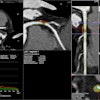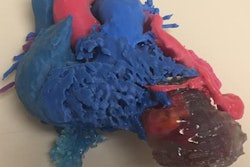Dear Advanced Visualization Insider,
Most medical imaging modalities require patients to remain relatively motionless to ensure that images are of the highest quality. This need is no more apparent than in the production of patient-specific 3D models using advanced visualization technologies such as virtual reality and 3D printing.
Recent advances in sensor technology may have at last opened the door to capturing high-quality images of patients in motion, at least for certain regions of the body. Researchers from the U.K. have developed a proprietary magnetoencephalography (MEG) scanner that is able to produce 3D images of the brains of adults and children as they engage in basic activities. The details behind the group's innovative work are covered in this edition's Insider Exclusive.
A team of scientists and radiologists at the Massachusetts Institute of Technology also has come up with a way to visualize human anatomy in motion by applying a mapping algorithm to 3D MR images. The technique allowed the team to generate 3D models of the placenta that unfolded and flattened, revealing how it would look after delivery.
On a different note, various groups have been investigating the potential of cinematic rendering to bolster diagnostic imaging in new scenarios:
- Dr. Elliot Fishman and colleagues from Johns Hopkins University demonstrated how they used cinematic rendering technology to generate black-blood CT scans, which provided a detailed view inside the lumen of blood vessels.
- In a presentation at the recent International Society for Computed Tomography meeting in San Diego, Dr. Savvas Nicolaou shared how radiologists at Vancouver General Hospital were using cinematic rendering to support trauma evaluation and preoperative planning.
Finally, 3D printing has continued to prove its utility in a wide range of clinical applications, from facilitating pre- and postoperative facets of gastrointestinal procedures to providing detailed information on rare cardiac anomalies. In a collaborative effort, researchers from the U.S., Switzerland, and China underscored four central applications of adult cardiovascular 3D printing.
The Advanced Visualization Community at AuntMinnie.com is home to numerous other news and stories featuring the latest developments in the field. As always, feel free to reach out with requests for any related topics you would like to see covered in the future.



















